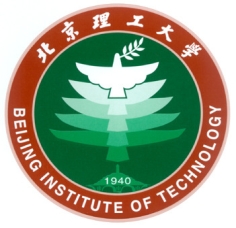bat365正版官方网站“博约学术论坛”-李迪-第434期
来源:陶立 教授 作者:李迪 高级工程师(中科院生物物理研究所) 发布时间:2024-03-14邀请人: 陶立 教授
报告人: 李迪 高级工程师(中科院生物物理研究所)
时间: 2024-03-14
地点: 大学物理实验中心229会议室
主讲人简介:


 bat365正版官方网站“博约学术论坛”系列报告
bat365正版官方网站“博约学术论坛”系列报告
第434期
题目:多维度超分辨荧光成像技术研发及细胞生物学应用 |
报告人:李迪 高级工程师(中科院生物物理研究所) 时 间:2024年3月14日(星期四)上午9:00 地 点:大学物理实验中心229会议室 |
摘要: 结构光照明超分辨成像技术(SIM)具有成像速度快等优势,是活体样本超分辨成像的有力工具,但传统SIM受照明深度、噪声和成像时长制约尚无法满足亚细胞超微动态观测的需求,围绕国家战略导向及人类健康研究方向,本人从软、硬件多层面多维度迭代革新SIM技术,应用研究细胞生物学并取得了多项创新成果:①实施改进传统SIM硬件,开发掠入射照明SIM技术(GI-SIM),提升10倍成像深度达1 μm及17倍成像速度达684幅/秒;②合作革新SIM重建算法,开发深度学习-SIM(DFCAN/DFGAN-SIM、rDL-SIM),提升30倍成像时长达6万幅;③应用自研新型SIM发现内质网新型延伸方式、哺乳动物细胞“搭便车”行为、线粒体形态重塑和高速摆动纤毛(>30Hz)中转运蛋白新行为等十余种生物学新现象。此外,本人开发了首套融合上述技术的商品化显微镜Multi-SIM,Multi-SIM不仅填补了高端国产超分辨显微镜的空白,并获牛津大学、HHMI、武汉血液中心和深圳先进院等国内外十余家单位采购,相关专利转化425万元。 |
简历: 李迪,2016年在中国科学技术大学获博士学位,现任中国科学院生物物理研究所正高级工程师,致力于超分辨率荧光显微镜开发和活体生物学应用研究。以第一或并列第一作者身份发表了Cell、Nature Methods和Nature Biotechnology等期刊5篇论文,其中掠入射结构光照明超分辨成像技术(GI-SIM, Cell, 2018)获得2018年度中国科学十大进展。授权发明专利10项,其中4项已技术转让425万元。主持“万人计划”青年拔尖人才、国自然面上、中科院技术支撑人才、北京科技新星和朝阳凤凰计划等项目。 |
联系方式:6120210244@bit.edu.cn 邀请人: 陶立 教授 网 址:http:/ 承办单位:物理学院、先进光电量子结构设计与测量教育部重点实验室 |
*Title:Development and biological applications of super-resolution microscopy |
*Reporter: Di Li senior engineer(Institute of Biophysics, Chinese Academy of Sciences) *Time:Mar 14th, 2024 (Tuesday) 9:00am *Place:Room 229 Physics Experiment Center *Contact Person: Li Tao,Professor,6120210244@bit.edu.cn |
*Abstract: Structured illumination microscopy (SIM) is one of the powerful super-resolution techniques in bioscience with the advantages of high spatiotemporal resolution and minimal phototoxic. However, conventional SIM suffers from illumination depth, background noise, and imaging duration that greatly limit its application in the imaging of subcellular dynamics. Focusing on national strategic objectives and public health needs, we created next-generation SIM with software and hardware innovation, which drive progression in many research fields, such as cell biology. Firstly, we upgraded conventional SIM hardware to build grazing incidence SIM technology (GI-SIM), which boosts imaging speed to 684 frames per second and increases imaging depth by 10 times to 1 μm. Secondly, we created deep-learning SIM (DFCAN/DFGAN-SIM, rDL-SIM) by innovating the SIM reconstruction algorithms, which extended the imaging duration by 30 times to 60,000 time points. Thirdly, we employed custom-built SIM for subcellular exploration, and over ten new biological phenomena were discovered and validated, including new behaviors of transport proteins in high-speed swinging cilia (>30Hz), "hitchhiking" behavior of mammalian cells, mitochondrial morphological remodeling. Moreover, I developed the first set of Multi-SIM commercial microscopes that incorporate the aforementioned technologies. Multi-SIM not only fills the gap of high-end Chinese-made commercialized super-resolution microscope, but also has been ordered by over ten domestic and international businesses, including Oxford University, HHMI, Wuhan Blood Center, and Shenzhen Advanced Institute. Pertinent patents have generated ¥ 4.25 million in total revenues from the assignment of patent rights. |
*Profile: Di Li is a senior engineer at the Institute of Biophysics, Chinese Academy of Sciences Chinese Academy of Sciences. He received her PhD from the University of Science and Technology of China in 2016. He focuses on the development and biological applications of novel super-resolution microscopy. He has published five papers in journals, including Cell, Nature Methods, and Nature Biotechnology. One of his works, Grazing Incidence Structured Illumination Microscopy (GI-SIM), was awarded as the top ten scientific advances in China in 2018. Four of his ten approved invention patents, related to Multi-SIM, have generated ¥ 4.25 million in total revenues from the assignment of patent rights He has presided over projects such as the National Youth Talent Support Program, the National Natural Science Foundation of China, the Chinese Academy of Sciences Technical Support Talents, the Beijing Nova Program, and the Chaoyang Phoenix Project. |




